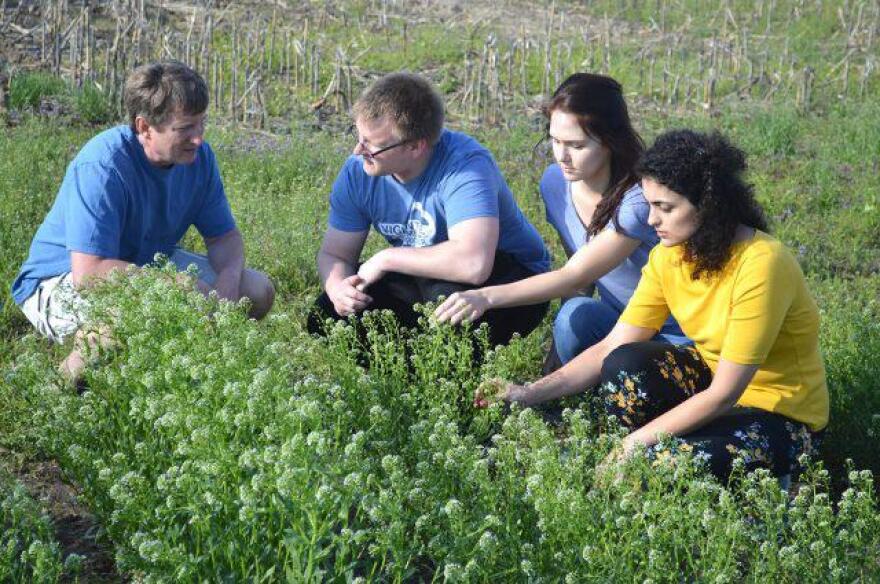An Illinois State University researcher’s project is getting a $13 million boost from the U.S. Department of Energy.
Professor of genetics John Sedbrook is leading development of a new cover crop called pennycress, with the goal of genetically strengthening the plant for use in sustainable energy and biofuels.
“What’s so special about it is it has an extreme cold tolerance, it produces a lot of seeds,” Sedbrook said. “It’s actually a relative of canola and we’ve made genetic changes to it that it now has the same oil and seed meal qualities as canola. We can grow it in the off-season here in the Midwest, planting it after corn and harvesting right before we put in soybeans.”
Sedbrook is working with the St. Louis-based CoverCress Inc. and a number of other institutions to bring the crop to market within the next two years. Last year, the project received $10 million from the U.S. Department of Agriculture. Sedbrook said that funding allowed them to put the finishing touches on the initial version of the crop.

With this next round of funding from the engergy department, Sedbrook said they’ll look to make the crop more resilient and consistent in producing seeds.
Researchers are doing that with the help of ecology enthusiasts. Sedbrook said they’re using a website called iNaturalist—and it’s companion app Seek—to find variations of pennycross from around the world.
“You can go out with your smartphone and point it at a plant or animal … and it will actually ID the plant or animal for you, and then you can post that on the internet,” he said. “Every day, we look for people posting about pennycress and then we message them and ask if they can send us seed.”
Sedbrook said they’ve already received seeds from places like from Russia, Ukraine, England, and Germany.
“We’ll be interrogating the genes in those different plants that are growing in all different sorts of environments—where it’s hot, where it’s cold, where it’s dry, different light conditions,” he said. “Then with supercomputing, we can tease out these genes that will make the plant more resilient to these different stresses. That’s what will go into this crop in future generations.”
Once the pennycress crop goes to market, Sedbrook said it could be a boon for the agriculture industry. Some varieties can produce 65 gallons of oil per acre that can be converted into biodiesel.
“Nobody’s going to get really rich off of this, but along the entire value chain, it’s going to be adding money to the bottom line, which we really need in these tough economic times--especially for farmers.”
Sedbrook said what makes it a win-win is the substantial environmental benefits.
“In the fall through spring, if you drive out in the countryside—especially here in Illinois—you see very little on the fields. There’s no cover crops being planted. If you look nationally, there’s only about 5% of the land planted in cover crops, which is totally unnatural. The land is not meant to be sitting empty,” he said.
Farmers could plant grasses, radishes, or any other cover crop, he said. The problem is, they aren’t very lucrative crops.
“Pennycress is one of the only cover crops, if not the only cover crop, that has those environmental benefits and yet farmers can make some money off it at the same time, which will help encourage adoption of this new crop.”
Of the $13 million DOE grant, $1.8 million will go directly to ISU. Other institutions partnering on the project include the Carnegie Institution for Science, the University of Minnesota, Western Illinois University, Washington State University, and Ohio State University.
We’re living in unprecedented times when information changes by the minute. WGLT will continue to be here for you, keeping you up-to-date with the live, local and trusted news you need. Help ensure WGLT can continue with its in-depth and comprehensive COVID-19 coverage as the situation evolves by making a contribution.


